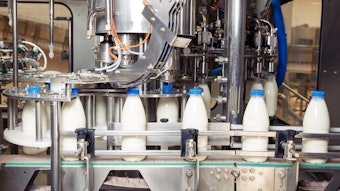Despite numerous technological advances over the past three decades—the computer, the microwave, cell phones to name just a few—all of which have been designed to make life easier, modern consumers still regard time as a precious commodity. A casualty of contemporary living is the traditional art of food preparation. Many consumers have little inclination to make fresh, home-cooked dishes from scratch after a long day at work. Instead, they prefer foods that are quick and easy to cook, which are ready-to-eat in minutes.
This trend is reflected in global sales of ready meals, projected to be worth $54.3 billion in 2009.1 However, in spite of this huge volume of sales, these products are frequently associated with poor taste. The challenge for flavorists and manufacturers is therefore to develop meals which are simple to prepare, but taste as good as home-cooked food.
Ingredients of Taste Success
One way to ensure a home-cooked taste in the end product is through the use of specialty chemicals to create delicious flavors. Potent specialty flavor chemicals are made on a small scale to a high degree of purity. They are usually nature-identical which means the same chemical is present in the natural flavor, but may be difficult to isolate naturally. They are safe for use in foods and beverages which allows flavorists to add them to blends to create the desired flavor profile. Specialty chemicals provide increased aromatic impact and individuality, and are designed to resemble and replicate a flavor type which consumers can compare to a recognizable foodstuff.
Reliability and Variety of Flavors
Modern manufacturing, storage, packaging and distribution methods cause foods to lose their fresh-cooked flavors, resulting in poor-tasting end products. Flavors, incorporating flavor chemical topnotes, are used to restore the taste characteristics of freshly-prepared foods. For example, the microwave cooking process is too short to obtain the flavor development associated with slow-cooked foods. By adding flavor components late in the food preparation stage, the product tastes good after just a few minutes in the microwave.
Furthermore, some fresh, natural ingredients are only grown during certain seasons, and crops and yields vary dramatically from year to year. Flavorists looking to create particular flavors are limited by the seasonality of an ingredient.
Specialty Chemicals: Aromas in Action
Specialty chemicals can be used in flavors for a diverse range of applications to satisfy every palate. These include ready meals, meat pies, tinned soups, cakes and bottled drinks in which these materials add distinctive top flavor notes that closely resemble the character of freshly prepared foods.
To illustrate the variety of applications for specialty chemicals, my company—in conjunction with Endeavour Specialty Chemicals—has devised a “virtual” supper menu. Although a simplification of the complexity and expertise involved in developing and using specialty chemicals, the menu below highlights some specialty chemical options in formulating distinctive foods and drinks. The components are reviewed in detail, describing the specific flavor attributes each item can bring.
A Virtual Supper Menu
1. Main course—roast beef stir-fry
Roast beef, fat: 12-methyltridecanal, FEMA# 4005
Sautéed bell pepper: 2-propyl pyridine, FEMA# 4065
Cooked garlic, asafetida: butyl ethyl disulphide, 3,4-dithiaoctane, FEMA# 4027
Grilled, smoked note: 1-phenylethyl mercaptan, FEMA# 4061
When combined, these specialty chemicals help create the various layers of beef stir-fry flavors. 12-Methyltridecanal, a nature-identical ingredient found naturally occurring in stewed beef, lamb, red deer, pork, chicken and turkey, contributes a stewed beef juice flavor, while 2-propyl pyridine contributes the strong, green, earthy notes of the sautéed pepper. Such specialty chemicals can be used in a wide range of savory flavors at dosage levels of 0.001 – 0.5 ppm, depending on the desired flavor intensity and application.
Strong cooked garlic tones are added through the incorporation of butyl ethyl disulphide 3,4-dithiaoctane. Reportedly found in asafoetida oil, this material is nature-identical and can be added to savory, soup, meat and seafood flavors at levels of 0.05 – 0.1 ppm. The finishing touches to the flavor profile are provided by 1-phenylethyl mercaptan, which brings smoky barbecue notes to meat flavors.
2. Dessert Chocolate and peanut fudge cake
2-phenyl-2-butenal and 2-ethylpyrazine
Dessert indulgence can be created through the combination of 2-phenyl-2-butenal and 2-ethylpyrazine. Adding roast chocolate notes, 2-phenyl-2-butenal is naturally found in cocoa and roast nuts and can be used in a variety of applications where a nutty flavor is desired. 2-Ethylpyrazine contributes buttery and peanut aromas to a wide range of flavors.
3. Refreshment tea
3-methyl-2,4-nonanedione, FEMA# 4057
Light refreshment is provided by 3-methyl-2,4-nonanedione, a high-impact specialty aromatic chemical suitable for use in tea, honey and parsley formulations. Found naturally occurring in dry green and black tea as well as dry parsley, 3-methyl-2,4-nonanedione imparts hay-like green notes. Recommended usage levels range from 0.0003 – 0.001 ppm in non-alcoholic beverages, with 0.001 ppm the suggested dosage in instant tea and coffee.
Summary
Consumer demand for good-tasting convenience foods and drinks has encouraged food manufacturers to search for improved flavors to incorporate into their products. Through the addition of specialty chemicals, flavorists can create mouthwatering flavors that accurately reflect the character of the freshly prepared food. This, in turn, enables manufacturers to develop delicious, flavorsome meals in the convenient format consumers require.
Address correspondence to Bryan Price, Treatt plc, Northern Way, Bury St Edmunds, Suffolk, IP32 6NL, UK; e-mail: [email protected].
References
- Ready meals: global industry guide. Datamonitor (November 2005).










